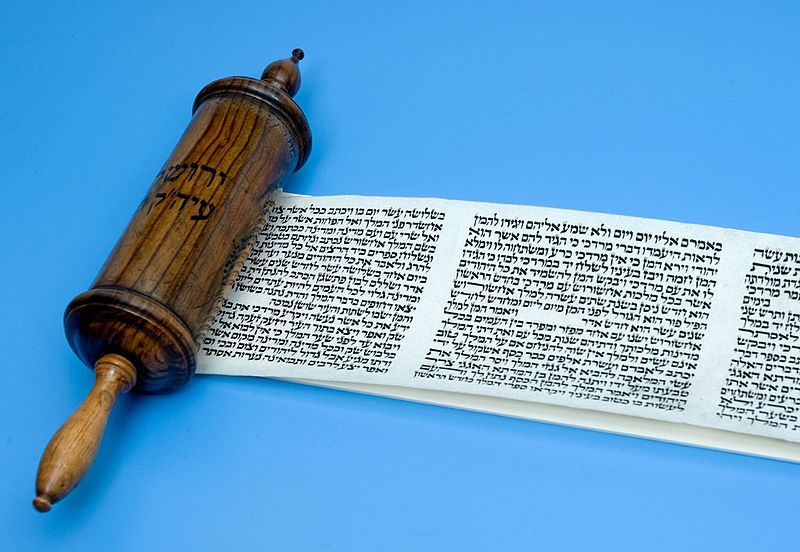Megillat Esther – Signs of the Faith
In this series, ‘Signs of Faith’, objects, procedures and concepts that express Jewish faith are explained and discussed.
Megillat Esther is Hebrew for the ‘scroll of Esther’. There are five books in the Old Testament traditionally referred to as ‘scrolls’: Ruth, Song of Songs, Lamentations, Ecclesiastes and Esther. They are linked to the various feast and memorial days. But only Esther is traditionally read from a kosher scroll, which is a parchment scroll, handwritten with ink, in the classical Hebrew script, just like a Torah scroll. Only Esther is invariably referred to as the Scroll of Esther. This will probably have to do with the popularity of the story and of the feast.
One notable difference from a Torah scroll is that Esther scroll is rolled on one stick, while a Torah scroll has two. This is purely practical, as the Talmud describes. A Torah scroll, of course, is much larger.
Moreover, a piece is read from it every week. Then it is easier to roll it through on two sticks, so that it can be closed where one left off.
An Esther scroll, on the other hand, is actually a letter (Esther 9:20 and 26) and is therefore read like a letter: all at once. This happens on Purim, twice, on the eve and in the morning. The scroll is first completely unrolled and neatly folded on the lectern, to be read aloud.
“An Esther scroll, on the other hand, is actually a letter (Esther 9:20 and 26) and is therefore read like a letter: all at once”
The precept (mitzvah) for Purim is that you must hear the Esther scroll read aloud, preferably in the synagogue. Moreover, you must hear the reader immediately and not through a phone, live stream or microphone. When reading aloud, therefore, it must be absolutely silent so that not a word is lost. Absolutely silent… except when the name Haman drops. Then as much noise as possible is made, with rattles and by stamping your feet, to drown out that name.
In practice everyone reads along, in his/her own scroll, or in a printed Bible. There are four passages that are jointly read aloud by everyone, after which the reader repeats them again, to ensure that everyone has heard them . These are known as the four ‘verses of salvation’.






